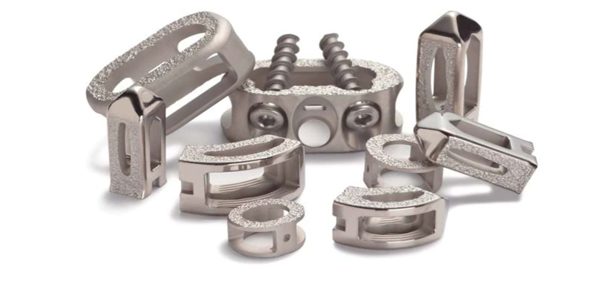During interbody spinal fusion surgeries, placing the interbody cages wider apart has a great impact on mitigating the loss of disc height after surgery. Maintaining disc height after a fusion surgery indicates a lower risk of revision surgery.
Introduction
For a specific type of spinal fusion surgery called interbody fusions, cages are implanted into the space between two adjacent vertebrae in order to restore disc height, increase the spaces for exiting nerves, and provide the scaffolding for new bone formation. The vertebrae may gradually collapse (subside) when downward pressure from the vertebrae pushes down onto the cages, shrinking the disc height.
The positioning of the cages between the vertebrae can influence the balance of the spine and the rate of fusion. The Spinal Research Foundation (SRF) researchers found that placing fusion cages more widely apart from each other helped to decrease the subsidence of the vertebrae into the cages. This helped reduce the loss of disc height after the surgery, improving outcomes in the long run, with longer-lasting effects of pain relief as well as a decreased need for revision surgeries.
Summary of Wide LT Cages
SRF found in this clinical study that placing the fusion cages more widely apart from each other helped to reduce the loss of disc height after the surgery. Fusion cages are inserted in order to restore disc height and increase space for exiting nerves. Normally, vertebrae gradually sink into the cages (known as subsidence), shrinking the disc height.
SRF’s study wanted to see if different placement would mitigate this loss of disc height. 83% of patients with “narrow” placed cages had a loss of disc space greater than 2mm, while only 43% of patients with widely-spaced cages had the same loss. This shows a significant effect the difference in placement has on preserving disc height. Reducing the rate of subsidence can increase the duration of positive outcomes from the surgery, such as pain relief, and can reduce the chances of secondary surgeries. The study suggests that wider spacing of cages should be used if anatomically possible.
The research done by SRF builds upon a previous study, done by Labrom et al. The study had shown that cages placed more posterolaterally (slightly more towards the posterior and further apart) could hold a 20% greater load before failing than cages placed closer together and more centrally; unfortunately, the difference was not significant. However, posterolateral placement of the cages can have risks. One study found that if a cage is placed too far laterally, it could result in a far lateral disc herniation, which would press on the nerve root. The most common cause for this was problem identifying the anatomic midline.



